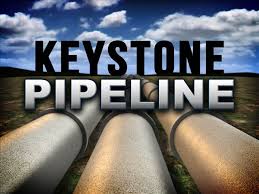
The developer of the Keystone XL oil pipeline plans to start construction next year, after a U.S. State Department review ordered by a federal judge concluded that major environmental damage from a leak is unlikely and could quickly be mitigated, a company spokesman said.
TransCanada spokesman Matthew John said the company remains committed to moving ahead with the project following years of reviews from federal and state regulators.
A portion of the pipeline will pass through Tripp County.
The company has already started preparing pipe yards, transporting pipe and mowing parts of the project’s right of way in Montana and South Dakota. TransCanada said in court documents it does not plan to start construction in Nebraska in the first half of 2019.
The report issued on Sept. 21 from the Trump administration’s State Department drew criticism from environmental groups who say they’ll continue to fight the project they view as an environmental threat.
The updated, 338 page report was released a little more than a month after a federal judge in Montana ordered the U.S. State Department to conduct a more thorough review of the pipeline’s proposed pathway after Nebraska state regulators changed the route.
The original environmental impact study was issued in 2014, before Nebraska regulators approved a longer “mainline alternative” route that veered away from the company’s preferred pathway.
President Trump approved a federal permit for the project in March 2017, reversing former President Barack Obama’s decision to reject it amid concerns over greenhouse admissions.
The report said the $8 billion, 1,184 mile pipeline would have a “negligible to moderate” environmental impact under its normal operations and continuous monitoring and automatic shut off valves would help company officials quickly identify a leak or rupture.
Additionally, the report said TransCanada has a response plan in place that should mitigate the effects if it’s implemented quickly.
Critics of the project have raised concerns about spills that could contaminate groundwater and the property rights of affected landowners.
In court documents from the Montana lawsuit, TransCanada’s attorneys said they believe all the pending lawsuits will be resolved before construction begins.
The pipeline would carry up to 830,000 barrels of crude oil a day from Canada through Montana, South Dakota to Steele City, Neb., where it would connect with the original Keystone pipeline that runs down to Texas Gulf Coast refineries. The State Department has noted that TransCanada has a lower overall spill rate than average in the pipeline industry.











